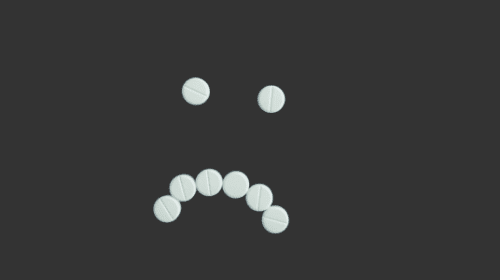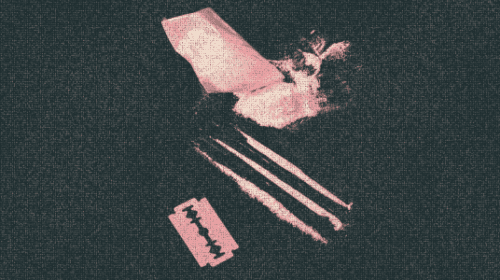What Is A K 56 Pink Pill?
Pink pills with the inscription K 56 are a prescription medication containing 10 mg of oxycodone hydrochloride, an opioid analgesic. It is a small, round, pink tablet, also referred to as “pink oxycodone,” used to treat moderate to severe pain and available in various forms and strengths.
How Does Pink Oxycodone Work?
Pink oxycodone works[1] by binding to opioid receptors in the central nervous system, which modulates pain perception and response.
Once pink oxycodone binds to these opioid receptors, it causes a decrease in pain by interfering with how the body perceives and reacts to pain signals.
What are the Side Effects of a K 56 Pink Pill?
Users should be aware of several side effects of taking a K 56 pink pill. These include:
- Nausea, vomiting, and constipation
- Drowsiness and dizziness
- Headaches and confusion
- Slowed breathing rate
- Difficulty sleeping or staying asleep
- Loss of appetite
Overall, pink oxycodone can be an effective pain reliever when used as prescribed, but users should be aware of the potential side effects that can occur. It is crucial to speak with a doctor before taking any medication and to follow all instructions given by a healthcare provider.
If any of these side effects worsen or persist for an extended amount of time, it is recommended that users seek medical attention immediately.
Is Pink Oxycodone Addictive?
A common misconception is that addiction to oxycodone only occurs with abuse or misuse, but even prescribed use can lead to addiction. Continued drug use can lead to physical and psychological dependence, which can be challenging to overcome.
One of the reasons why pink oxycodone is so addictive is because it creates a cycle of pain and relief.
As the body becomes accustomed to the drug, patients may experience withdrawal symptoms[2] when they stop taking it. This can lead to a desire to continue taking the medication, even when it’s no longer needed for pain management.
Another reason why pink oxycodone is so addictive is that it produces a sense of euphoria. This effect can lead to a desire to take the drug for its pleasurable effects rather than its intended purpose. This is especially true for individuals with a history of substance abuse or addiction.
It’s important to note that not everyone who takes pink oxycodone will become addicted to it. However, certain risk factors can increase the likelihood of addiction. These include a history of substance abuse or addiction, a family history of addiction, and a history of mental health disorders.
Treatment Options for Oxycodone Addiction
If you believe that you or someone you know is addicted to pink oxycodone, it’s essential to seek help immediately. Addiction can be difficult to overcome on your own, and professional treatment can provide the support and resources needed for lasting recovery.
Below are some of the treatment options available for those struggling with oxycodone addiction:
Medical Detox
The first step in treating oxycodone addiction is often medical detox. This process involves the safe and monitored withdrawal from the drug under the supervision of a physician. Medical detox can be done on an inpatient or outpatient basis and typically lasts a few days to a few weeks.
A physician may use medication to help ease some of the withdrawal symptoms, such as nausea, diarrhea, and muscle pain.
Medication-Assisted Treatment (MAT)
MAT is a type of addiction treatment that combines medication and behavioral therapy. Medicines used for MAT, such as methadone, buprenorphine, and naltrexone, can help to reduce cravings and prevent relapse. However, these medications can only be prescribed by a qualified healthcare professional and are used in combination with counseling or therapy.
Behavioral Therapies
Behavioral therapies are a cornerstone of addiction treatment. Various techniques within the category of behavioral therapies can be employed to combat oxycodone addiction. For instance, cognitive-behavioral therapy (CBT) helps individuals identify and modify negative thoughts and beliefs that drive addiction.
In addition, behavioral therapies can be performed on an individual or group basis and effectively address the underlying causes of addiction to promote long-term recovery and prevent relapse.
Support Groups
Support groups, such as Narcotics Anonymous (NA), are also critical to addiction recovery. Support groups provide a safe and supportive environment for individuals to talk about their experiences and feelings and offer accountability and encouragement.
Support groups often use the 12-step program to help individuals stay sober and maintain a healthy lifestyle.
Individual Therapy
Individualized therapy programs focus on treating the individual rather than the addiction itself. Additional supportive treatments may include practices like yoga, meditation, and art therapy, which can complement mainstream addiction treatment by promoting overall well-being.
These alternative treatments aim to cultivate more significant connections between the mind, body, and spirit, promoting self-awareness and encouraging behavior change.
Find Out More About Oxycodone Medications And Their Associated Side Effects.
To learn more about drug abuse and treatment options, check out these additional resources.


























